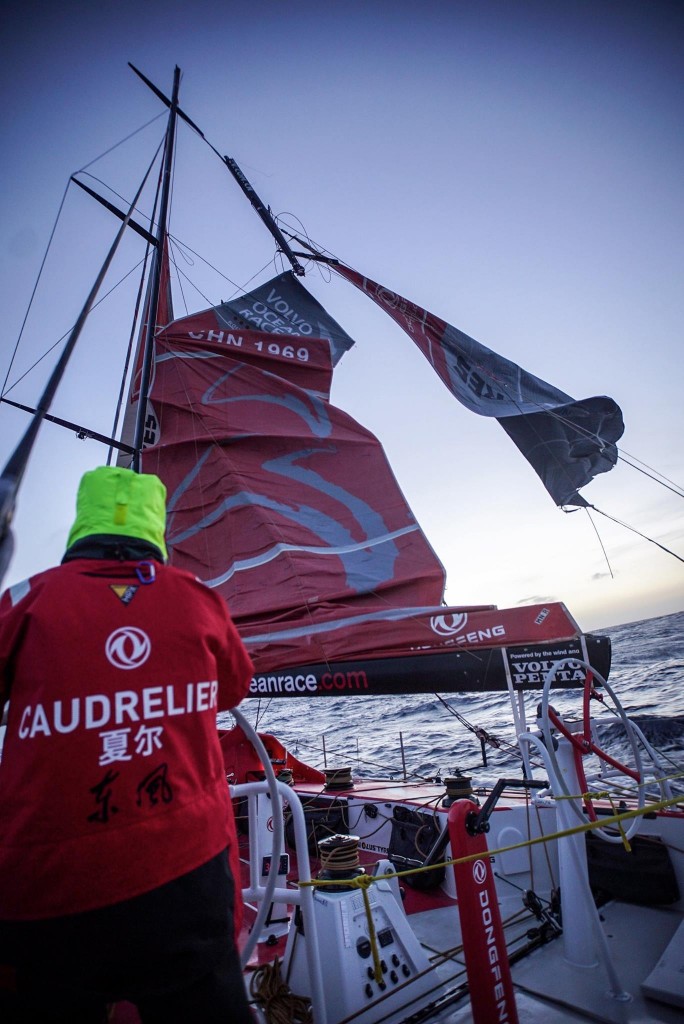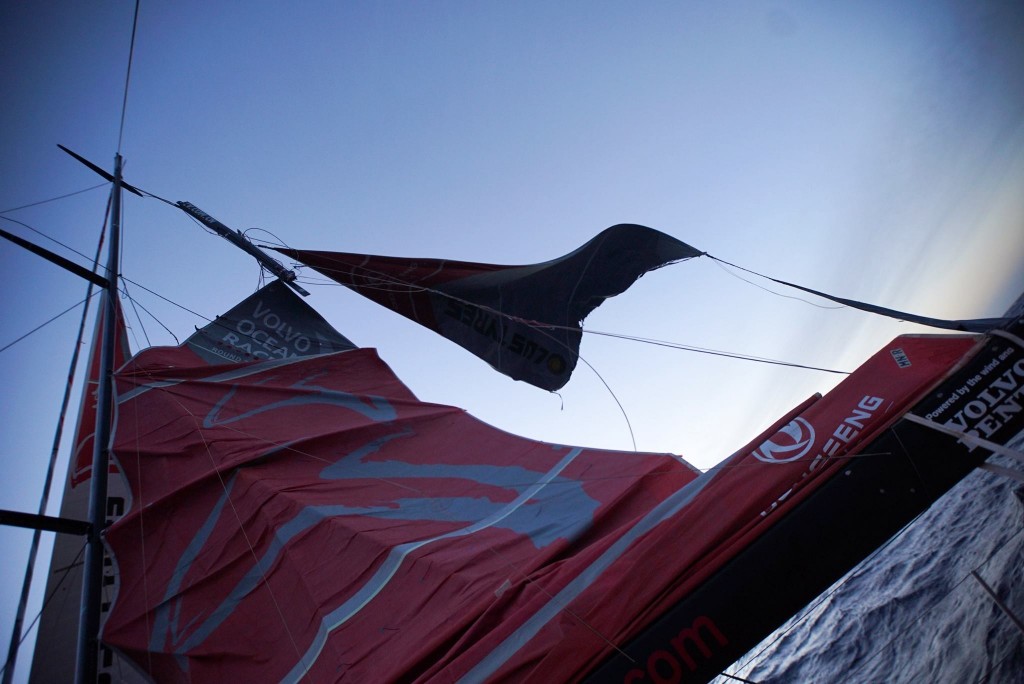No Water Maker Is A Big Problem
Twenty-four hours into Leg 6 of the Volvo Ocean Race and Dongfeng Race Team suffered another set back. Not as immediately devastating as breaking the mast, but with potential serious consequences. Dongfeng OBR, Sam Greenfield, tweeted from the boat: “Broken water maker. No more fresh onboard. Thirsty crew. Bad.”
The VO65 is fitted with an electric water maker turning the salt water they are sailing through into drinkable water, as a back-up they have a manual one but the effort required to produce adequate supplies to not only to rehydrate but to prep the freeze-dried foot, is mind-boggling, a needless distraction from racing, but essential as our Boat Captain put it into perspective “The crew will need to pump approximately 8-9 hours a day to make enough water.”
“They know what the problem is,” said Neil Graham, Technical Director. (Watch video from onboard as Charles explains). “We’re waiting for confirmation form the boat but Kevin should have attempted a repair on the Membrane Pressure Vessel. The plan was to apply some glue and then wrap the end of the vessel, where the leak is, in carbon fibre laminate, to seal it.” We’re hoping our Mr Fixit, Kevin Escoffier, can work his magic once again.
In the meantime, the determined men on board have to keep pumping.


